Life on a Square Meter #2: A Patch of Grass
Did you know that there are many different types of flowers hiding between the blades of grass? Most of the grasses even have their own flowers! Join me on a stroll through the a "forest" of grass.
To go on this journey, we have to shrink ourselves significantly. As we become smaller, the grass blades around us become taller, until they tower over us like flat two-dimensional trees. What initially appeared like a simple patch of grass, has now become a forest of multitudes. Surrounding us are more types of flowering grasses, plants, and weeds than we were able to see from our position as giants.
We begin our journey under the shade of the starfruit tree that blossoms right above our head, its flowers miniscule compared to the large fruits that will grow from it. Petunia is raising hell in the bushes behind the tree, clearly unhappy with our presence but I reassure her that we plan to explore the miniature world and not raid her nest.
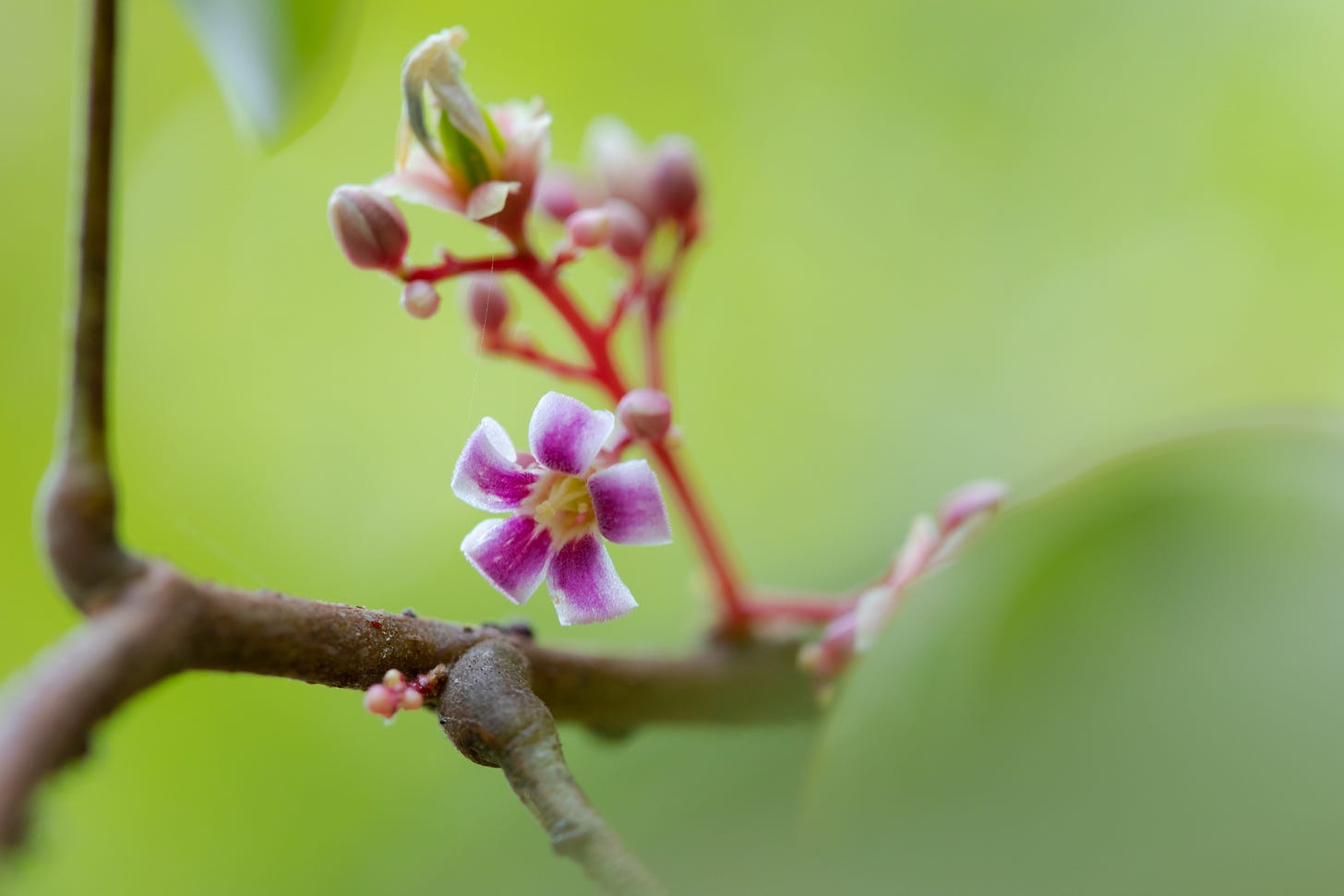
As the tree provides us shelter from the heat of the sun, at least partly, we come upon our first flower. Many of you might know it from the annoying little hitchhikers that you get from this plant all over your clothes. It goes by many names, but creeping beggarweed is probably the most fitting. While most of us are intimately acquainted with their sticky seeds, my guess is that most you are not as acquainted with the gorgeous orchid like flowers this plant has. Now that we have shrunk to the size of a caterpillar, we have a front row seat view of these gorgeous flowers. Thankfully, there are no hitchhikers so we do not have to worry about giant sticky seeds getting stuck in our hair.
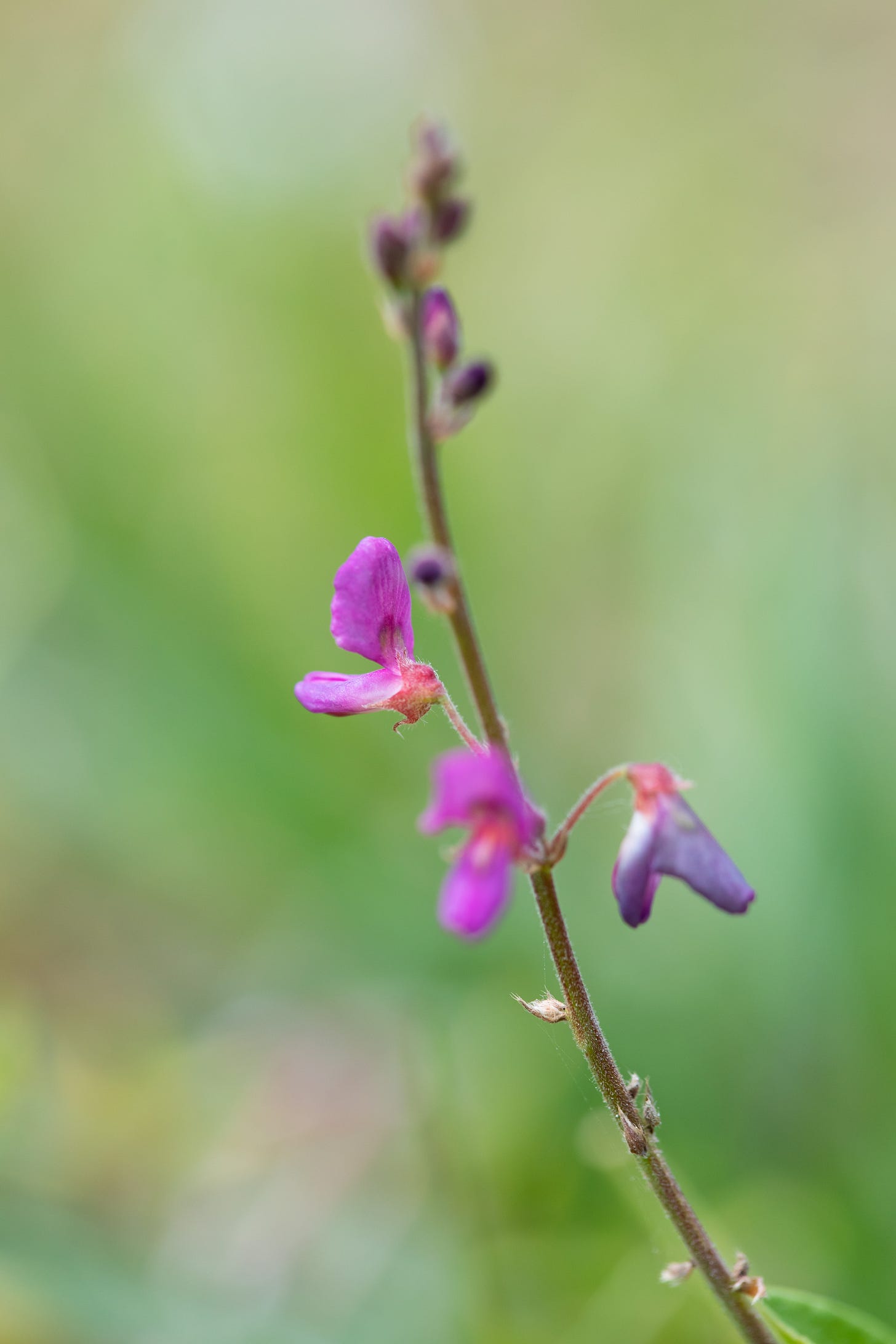
Accompanying this annoying but beautiful plant is the Virginia Pepperweed or, at least, that is what Google lens tells me. It is nearing the end of its blooming stage but we can still see a couple tiny flowers. Some of the flowers look like miniature royal crowns. Perhaps some royal ant family can cultivate these to crown their successors. The size of these flowers is about the right size for an ant’s head, I’d say.

We wrestle our way further through the grass-forest, occasionally hacking some thick vegetation out of the way. The grasses here seem thicker than where we started and within ten minutes we feel like we are getting a great workout. A large shadow suddenly looms over us and when we look up we see a bouquet of flowers looking as if it is made for a wedding. Still think weeds are a thorn in the eye? This wedding-bouquet weed is shrubby false buttonweed. Despite sometimes being considered invasive, it is an important nectar source for pollinators. Thinking about the royal ant family again, maybe they can use these bouquets during their crowning ceremonies. It looks fit for a royal family for sure!
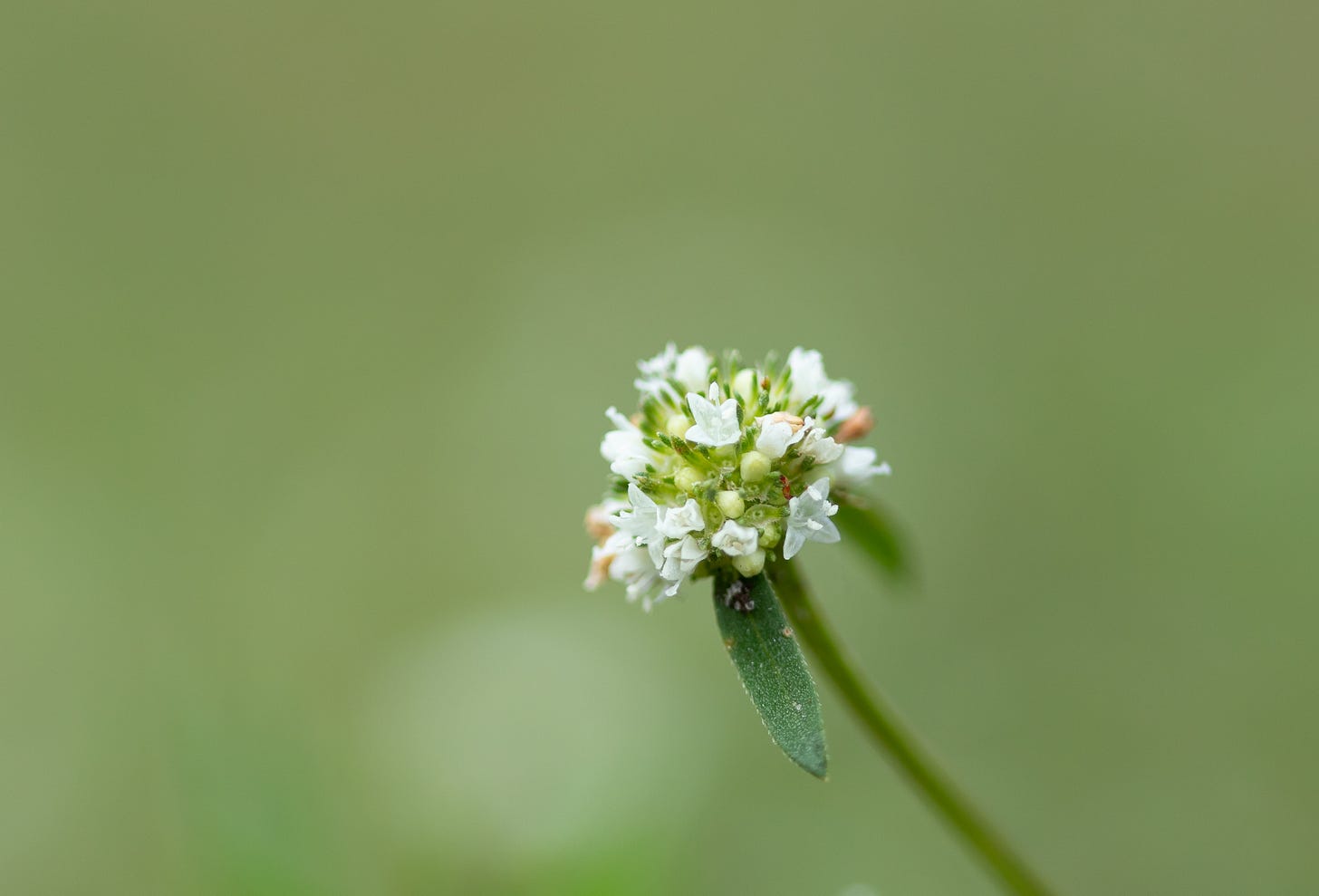
Slightly further into our journey, we stumble upon a wet patch. The towering grasses are replaced by giant round platforms on sticks, almost like giant green mushrooms. The environment is more aquatic here and so is the vegetation. It is so dense that we cannot see the sun anymore and it is significantly darker here in the shade of these monstrous plants. It is a lot more humid here too, and soon, we break out in a sweat. A ray of light in the distance draws us to it, and we step into a clearing. Out of one of the towering plants grows a tall stem crowned with magnificent white flowers. It is the large leaf pennywort. Slimy looking antennas stick out of the flowers and it reminds me of the antennas of snails. I wonder if they retract as well if I would touch them.

Our feet are starting to get wet and we quickly move on to the next part of our patch, a much dryer region. Here we are surrounded by thick grasses again, an ocean of green in all directions. Almost ready to give up on finding anything other than green, we spot something blue. Upon closer inspection we see a flower that is known as the common dayflower, or spreading dayflower. It has not fully spread its petals yet. Maybe it is simply a little shy after realizing it has visitors. But even though it is not showing its full beauty to us, the blue color is a welcome sight.
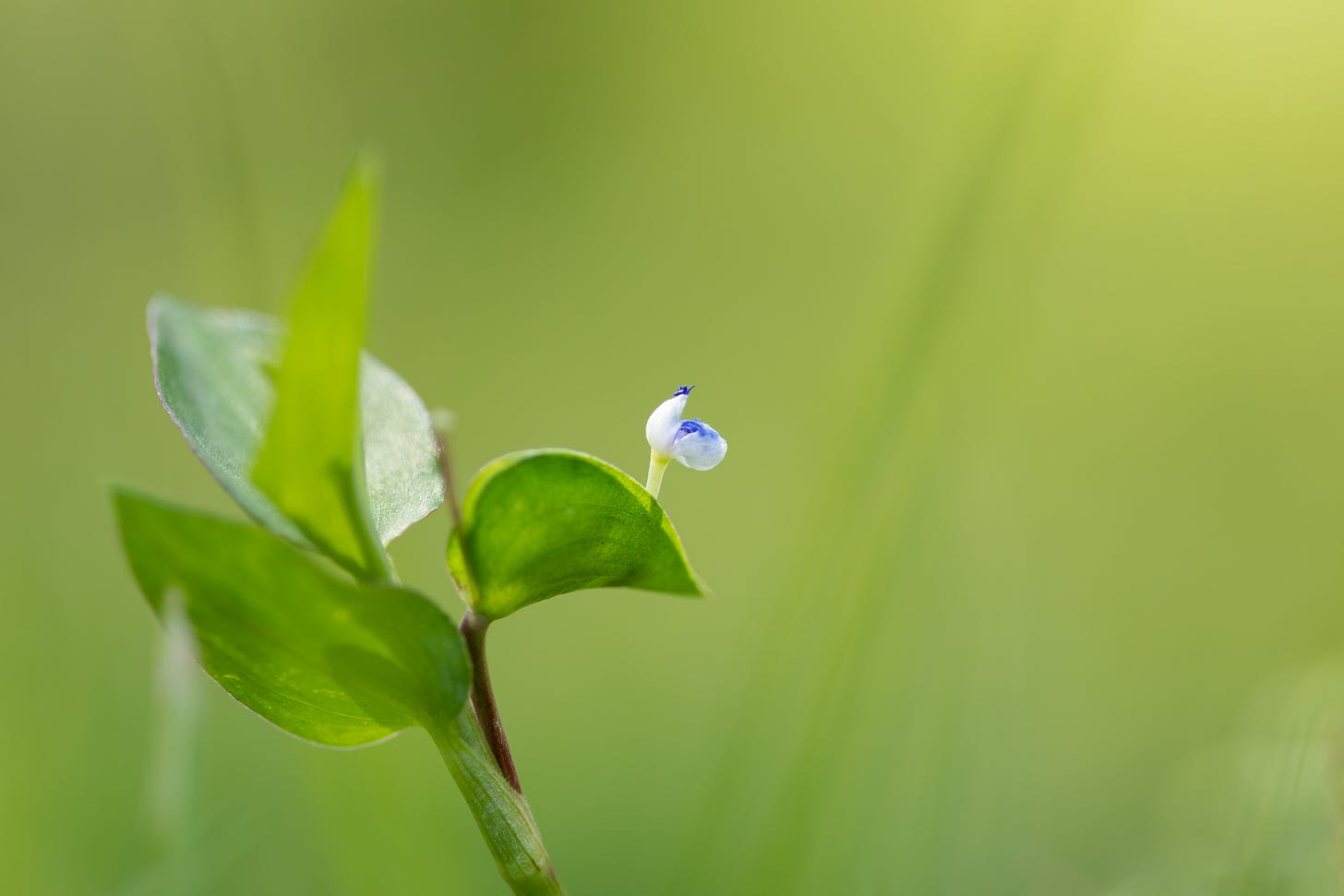
Suddenly, we hear loud buzzing around us. The sound is almost ear-deafening and we seek shelter under the grasses. A loud thud tells us whatever was in the air only a moment ago, has landed. We creep closer and are greeted by the most colorful fly. It has almost all the colors of the rainbow, and its wings have a gorgeous iridescent sheen. It is the Eastern Calligrapher fly. It’s beauty is almost mesmerizing with its colors standing out in stark contrast to the green around it. I wonder what it would be like to mount one and fly it through our patch of grass.
We conclude our outdoor adventure with an actual grass. Like a string of beads with ornaments, it gently swings back and forth in the wind like a giant bracelet. This stunning grass looks like it came straight from the jeweler. We stare at it for a while, breath taken by the very thought of a simple grass being able to look so stunningly beautiful. Bahiagrass in bloom is something out of this world. Before today, I never knew how breathtaking the blooms of this grass are. Entirely hidden from the naked eye, only a close up look reveals its secrets.
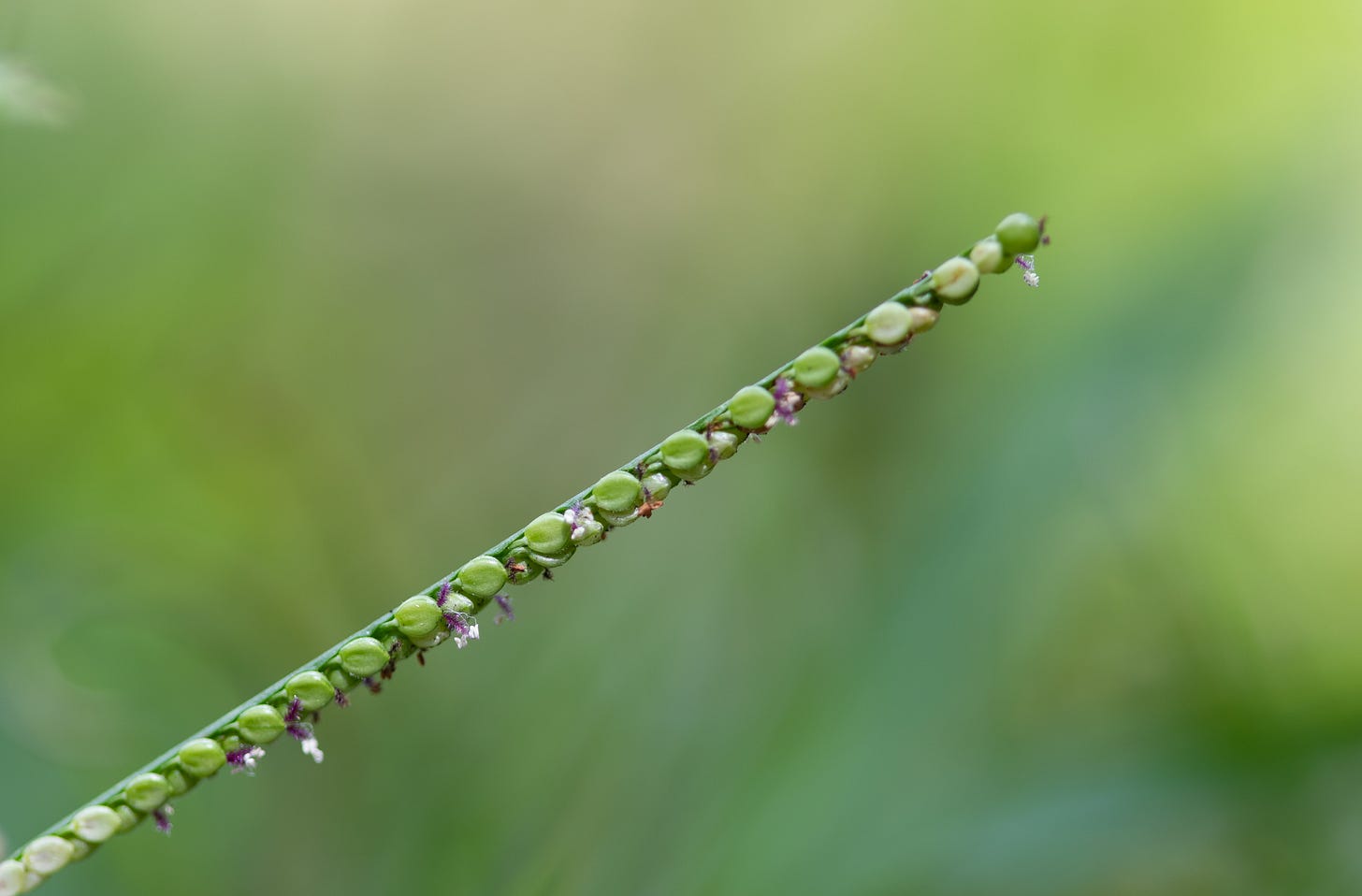
We have reached the end of our patch and we grow back to our normal giant human forms. The different colors, flowers, and details disappear from our field of vision and are replaced by the monotone looking green of simple grass. But we know better now. What seems like a simple patch of grass is, in reality, a hidden world of beauty that rivals that of a wildflower patch.






Lovely post, Aria. It is sad that most people never notice the amazing nature that surrounds us, especially the tiny plants and creatures that live among them. Well done for bringing some of them to our attention :-)
Beautiful post, Aria. I love the descriptions and photos. I like that Eastern Calligrapher Fly and had never heard of one before. Nature is truly amazing and the fractal seem endless. There appears a trace of everything in everything else once we take the time and perspective to look. Thank you for sharing.